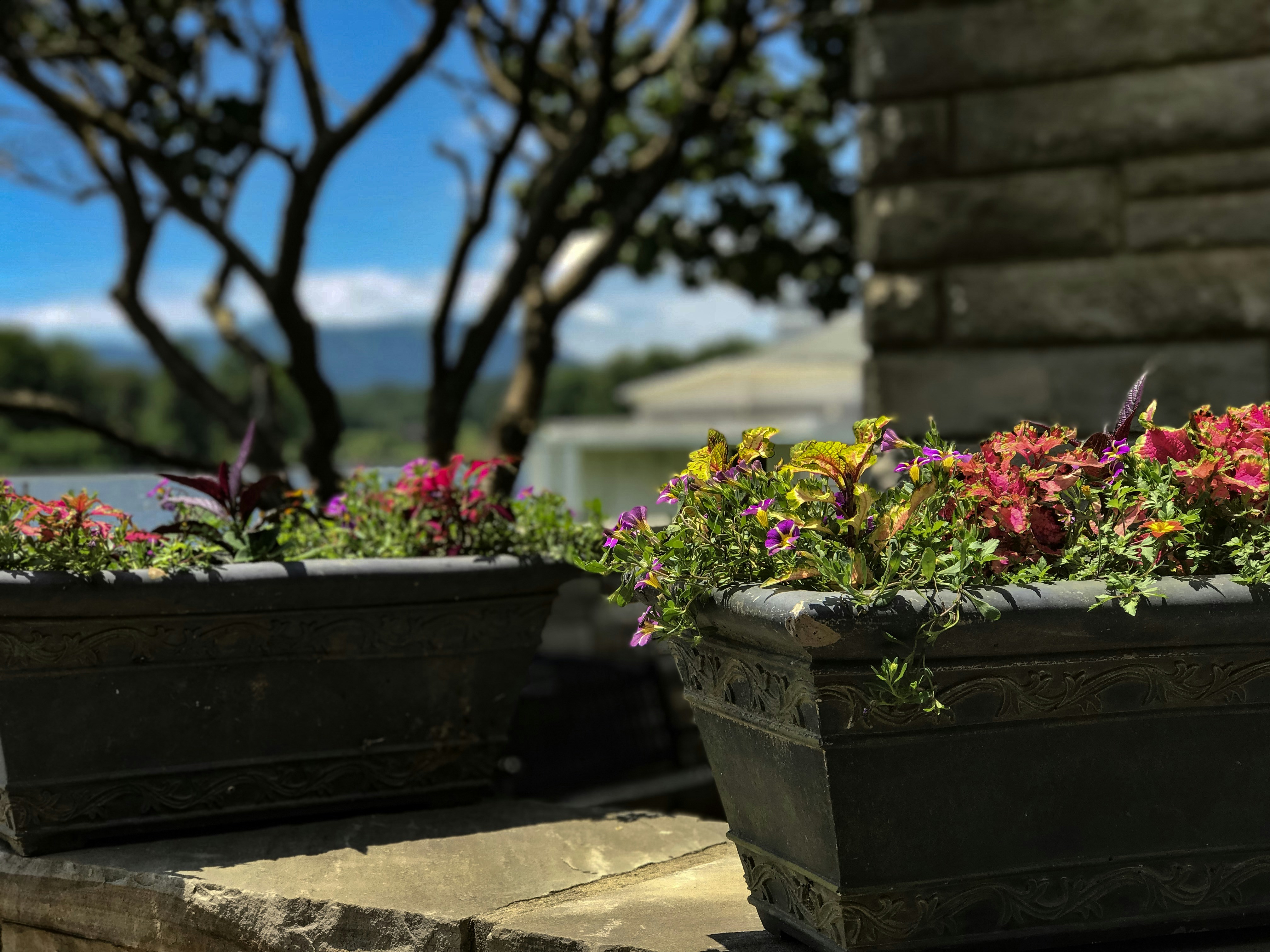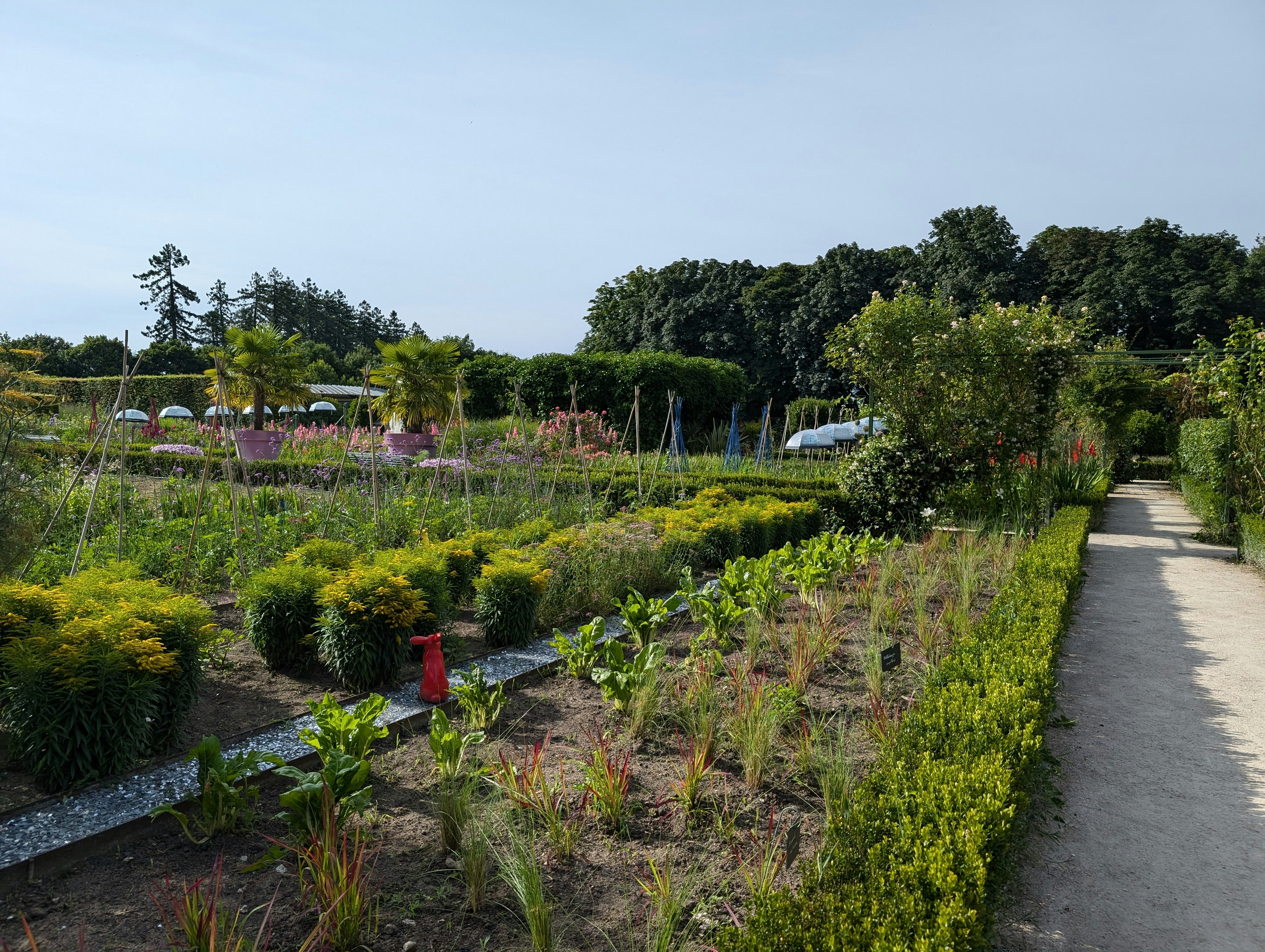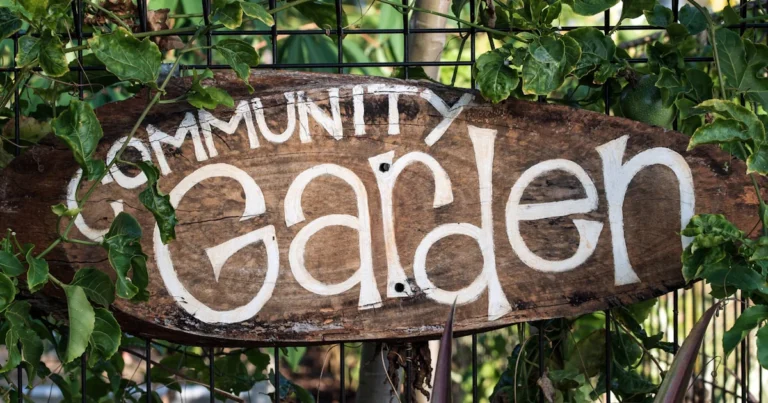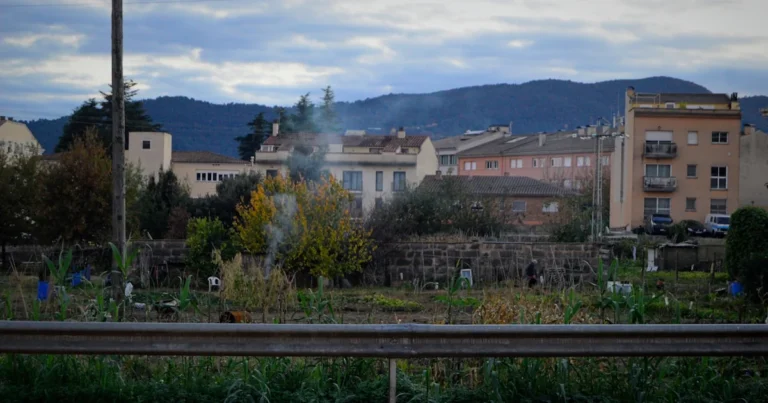Support our educational content for free when you purchase through links on our site. Learn more
Imagine turning your love for plants into a thriving community where friendships bloom alongside tomatoes and sunflowers. Starting a gardening club isn’t just about sharing dirt and seeds—it’s about cultivating connections, learning new skills, and making a real impact in your neighborhood. Did you know that community gardening can boost emotional well-being and social bonds, according to a 2020 study by the NIH? 🌻
In this comprehensive guide, we’ll walk you through 12 essential steps to launch your own gardening club—from defining your vision and recruiting members to hosting engaging meetings and organizing community projects. Plus, we’ll share inspiring stories from successful clubs around the world and provide a free garden planning guide to get you started. Ready to dig in and grow together? Let’s get planting!
Key Takeaways
- Start with a clear purpose and vision to attract the right members and set your club up for success.
- Recruit members through local hubs and online platforms like Meetup and Facebook groups.
- Host fun, educational meetings with workshops, garden tours, and guest speakers to keep members engaged.
- Organize community projects to make a visible impact and attract new members.
- Leverage social media and traditional outreach to grow your club’s presence.
- Build a shared toolkit and pool resources to support hands-on activities.
- Anticipate challenges like funding and conflicts with clear policies and open communication.
- Download our free Ultimate Garden Planning Guide to help plan your club’s garden projects with confidence.
👉 Shop Gardening Tools & Seeds:
Table of Contents
- ⚡️ Quick Tips and Facts About Starting a Gardening Club
- 🌱 The Roots of Gardening Clubs: A Brief History and Evolution
- 🌟 Why Start a Gardening Club? Discover the Amazing Benefits
- 🎯 Defining Your Gardening Club’s Purpose, Vision, and Goals
- 👥 How to Gather Your Green-Thumbing Tribe: Recruiting Members
- 🗓️ Planning and Hosting Engaging Gardening Club Meetings That Grow Interest
- 📚 Top Gardening Club Meeting Topics and Activities to Keep Everyone Blooming
- 🌿 Organizing Community Garden Projects and Events: From Seed to Celebration
- 💡 Tips for Effective Gardening Club Leadership and Member Engagement
- 📈 Growing Your Gardening Club: Marketing, Social Media, and Outreach Strategies
- 🛠️ Essential Tools, Resources, and Supplies for Your Gardening Club Success
- 📥 Get My Free Garden Planning Guide! Your Ultimate Companion to Club Gardening
- 🔍 Troubleshooting Common Challenges in Starting and Running a Gardening Club
- 🌎 Inspiring Stories: Successful Gardening Clubs Around the World
- 📝 Conclusion: Cultivating a Thriving Gardening Club Community
- 🔗 Recommended Links for Aspiring Garden Club Founders
- ❓ Frequently Asked Questions About Starting a Gardening Club
- 📚 Reference Links and Further Reading
Here at Community Gardening™, we’ve seen firsthand how a few shared seeds can blossom into a full-fledged community. We believe in the power of growing together, and starting a gardening club is one of the most rewarding ways to do just that. So, grab your trowel and a cup of tea, and let’s dig into how you can cultivate your very own green-thumbed tribe!
⚡️ Quick Tips and Facts About Starting a Gardening Club
Jumping in with both feet? We love the enthusiasm! Here are some quick takeaways to get your gardening club off the ground.
- Start Small: You don’t need 50 members on day one. A club can start with just two or three passionate people. As The Bluegrass Blacksheep blog wisely puts it, “If you have the opportunity to start a garden club, whether it’s two people or fifty people, start today!”
- Define Your Vibe: Are you a casual, wine-and-weeding group or a structured, educational society? Deciding this early helps attract the right people.
- Meetup Magic: Platforms like Meetup.com are fantastic for finding local gardeners. The “Florida Gardeners” group mentioned on a Houzz forum grew to over 1,300 families using this platform!
- Community is Key: A successful club is about more than just plants; it’s about people. Focus on building relationships. A 2020 study found that community gardening significantly enhances social well-being and a sense of community.
- Don’t Reinvent the Wheelbarrow: Lean on resources from organizations like the Royal Horticultural Society (RHS) or your local university extension office. They often have free guides and advice.
- Promotion is Power: Wondering how will you promote gardening in your community? Simple flyers, social media posts, and word-of-mouth are incredibly effective.
🌱 The Roots of Gardening Clubs: A Brief History and Evolution

Ever wonder where this brilliant idea of gathering to talk about plants came from? Gardening clubs aren’t a new-fangled trend; they have deep, historic roots! The concept blossomed in the 19th century, with the first garden club in America founded in Athens, Georgia, in 1891. These early clubs, often led by women, were pioneers in civic beautification and conservation, long before it was cool.
These weren’t just social gatherings for sipping tea (though we’re sure some of that happened!). They were powerful forces for change. Organizations like The Garden Club of America, founded in 1913, championed projects to preserve native plants, establish parks, and educate the public.
From these formal beginnings, the garden club has evolved. Today, a “gardening club” can be anything from a group of neighbors sharing zucchini surpluses to a highly organized non-profit managing a city-wide community garden. The stuffy stereotypes are long gone, replaced by a vibrant, diverse movement that includes:
- Urban homesteaders sharing canning techniques.
- Apartment dwellers swapping tips on balcony gardening.
- School clubs teaching kids where their food comes from.
- Online communities connecting gardeners across continents.
The core mission, however, remains the same: sharing a passion for the earth and making the world a little greener, one garden at a time.
🌟 Why Start a Gardening Club? Discover the Amazing Benefits
So, you’ve got a budding interest in starting a club. But what’s really in it for you and your community? Let us tell you, the harvest of benefits is bountiful! It’s about so much more than just pretty flowers.
Here at Community Gardening™, we see these perks bloom every single day in the communities we work with.
- 🤝 Forge Friendships: You’ll connect with people who get just as excited about a perfect tomato as you do. It’s a fantastic way to build a close-knit community and combat loneliness.
- 🧠 Share the Brains: Tap into a collective pool of knowledge! Someone in your group will know the secret to fighting aphids, another will be a composting guru, and you might be the expert on growing killer basil. The learning is endless.
- 🌿 Boost Your Well-being: Gardening is a proven stress-buster. A study from Princeton University found that gardening was one of the top activities for boosting emotional well-being. Doing it with friends? That’s a double dose of happiness!
- 🎉 Access to More Stuff: Pooling resources is a game-changer. Suddenly you have access to a shared seed library, tool-lending programs, and bulk discounts on soil and compost.
- 🌍 Make a Real Impact: Your club can take on bigger projects, like starting a pollinator pathway, beautifying a neglected public space, or donating fresh produce to a local food bank. These are some of the core benefits of community gardens.
- 🌱 Motivation on Tap: Let’s be honest, sometimes our gardening motivation wilts. A club keeps you accountable and inspired. As one club founder noted, the lively energy “keeps us all motivated to keep going… We cheer each other’s successes and help problem-solve the challenges.”
🎯 Defining Your Gardening Club’s Purpose, Vision, and Goals
Before you start sending out invites, take a moment to think. What is the point of your club? Having a clear direction is like having good soil—everything else grows from it. Without it, you might just end up with a weedy mess of conflicting ideas.
As the folks at The Bluegrass Blacksheep perfectly state, “Getting the purpose and vision right for your garden club is like planting the seeds of a great adventure.”
H3: Find Your “Why”: The Purpose
Your purpose is the heart of your club. It’s the core reason you’re gathering. It doesn’t have to be complicated! Ask yourself:
- Are we here to learn and become better gardeners?
- Is our main goal to socialize and build friendships around a shared hobby?
- Are we focused on a specific mission, like promoting native plants or growing food for charity?
- Is this primarily for kids, like a school gardening club, to nurture life skills and a love for nature?
H3: Paint the Picture: The Vision
Your vision is what your club looks like when it’s thriving. It’s the “what if.” Dream a little!
- “We envision a neighborhood where every front yard has a patch of native pollinator-friendly flowers.”
- “Our vision is to become the go-to resource for organic vegetable gardening in our town.”
- “We see a vibrant school garden, run by students, that supplies the cafeteria with fresh salads.”
H3: Set Your Stakes: The Goals
Goals are the tangible steps you take to make your vision a reality. They should be specific and achievable. This is where you might start thinking about your club’s structure and rules, which can be formalized in your Community Garden Policies.
Here’s a table to get your ideas flowing:
| Club Type | Purpose | Vision | Potential Goals |
|---|---|---|---|
| The Neighborhood Beautifiers | To improve the look of our local area through plants. | A beautiful, green, and welcoming neighborhood. | ✅ Plant 500 daffodil bulbs in the park. ✅ Win the “prettiest street” award. ✅ Host an annual neighborhood garden tour. |
| The Veggie Growers | To learn how to grow our own food and share the harvest. | Abundant, healthy, homegrown food for all members. | ✅ Host monthly workshops on topics like seed starting and pest control. ✅ Organize a bulk seed order. ✅ Set up a produce-swap table at each meeting. |
| The Eco-Warriors | To promote sustainable, wildlife-friendly gardening. | A local ecosystem teeming with birds, bees, and butterflies. | ✅ Build and install 10 bug hotels. ✅ Get our community certified as a wildlife habitat. ✅ Eradicate invasive buckthorn from the local woods. |
| The School Sprouts | To teach children about nature and where food comes from. | An engaged student body with a deep connection to the natural world. | ✅ Build three raised beds. ✅ Grow pumpkins for Halloween. ✅ Partner with the science class on a life-cycle project. |
👥 How to Gather Your Green-Thumbing Tribe: Recruiting Members
You’ve got a vision, you’ve got the passion… now you just need the people! Finding your founding members can feel daunting, but think of it like scattering wildflower seeds—you just need to put them in the right places and watch them grow.
So, how do you find fellow plant nerds?
- Start with Your Own Patch: Talk to friends, family, and neighbors. You’d be surprised who has a secret love for succulents or a desire to learn. This is the easiest and most natural place to begin. I remember starting our first neighborhood group simply by complaining about my sad-looking tomatoes to a neighbor, who then introduced me to another neighbor with a magical tomato-growing touch. A club was born!
- Go Where the Gardeners Are:
- Local Garden Centers & Nurseries: Ask if you can put up a flyer on their community board. Staff are often well-connected and might know customers who’d be interested.
- Farmers’ Markets: People who appreciate fresh, local food often have an interest in growing it.
- Libraries & Community Centers: These are hubs of local activity and perfect spots for a well-placed flyer.
- Leverage the Digital Weeds (aka The Internet):
- Social Media: Use local Facebook groups (e.g., “Your Town’s Community Page”), Nextdoor, and Instagram. Post a friendly message with a picture of your garden and ask if anyone wants to join you.
- Meetup.com: As the wildly successful “Florida Gardeners” group proved, this platform is built for creating local interest groups. It handles RSVPs and communication, making it super easy to manage.
- Host a “No-Pressure” Info Session:
- Invite potential members to a casual get-together. Call it a “Garden & Greet” or “Plant & Chat.”
- Host it at your home, a local park, or a coffee shop.
- Have a simple agenda: introduce the idea, brainstorm what the group could be, and gauge interest.
- Pro Tip: Have a small plant or seed swap! It’s a great icebreaker and ensures everyone leaves with something.
Remember, you’re looking for enthusiasm, not necessarily expertise. A beginner with a passion to learn is just as valuable as a master gardener.
🗓️ Planning and Hosting Engaging Gardening Club Meetings That Grow Interest
The secret to a long-lasting club? Meetings that people actually want to attend. A boring meeting can kill a club faster than a squash bug infestation. The goal is to make them fun, useful, and inspiring.
There are no hard-and-fast rules. As one club founder shares, her group hosts monthly meetings on Tuesday evenings because it works for them, often rotating homes and sharing a meal. Another successful club holds free, 2-hour classes on weekends in members’ gardens. The key is finding a rhythm that fits your group’s lifestyle.
H3: The Nitty-Gritty Logistics
- Frequency: Monthly is a popular choice. It’s regular enough to build momentum but not so frequent that it feels like a chore.
- Location: Rotating between members’ homes is cozy and allows for garden tours. Public spaces like libraries or community centers are great for larger groups or if you need more structure. Don’t forget parks or the community garden itself for hands-on activities!
- Timing: Weekday evenings? Weekend mornings? Take a poll of your founding members to see what works best for the majority.
- Food & Drink: Let’s be real, snacks make everything better! It can be as simple as coffee and cookies, or a full-blown potluck featuring garden harvests. This is a fantastic way to build camaraderie.
H3: Structuring Your Meetings
A little structure goes a long way. A typical meeting could look like this:
- Welcome & Social Time (15-20 mins): Let people arrive, grab a drink, and chat. This is where the community-building happens.
- Club Business (10-15 mins): A quick update on any club news, upcoming Community Garden Events, or decisions that need to be made. Keep it brief!
- Main Event (45-60 mins): This is the core of your meeting. It could be a guest speaker, a workshop, a garden tour, or a group discussion. (More on this in the next section!)
- Q&A / “Garden Brags & Woes” (15 mins): A dedicated time for members to ask for advice, show off a prize-winning pumpkin, or lament a pest problem. It’s group therapy for gardeners!
- Wrap-up & Reminders (5 mins): Announce the next meeting date and topic.
Here’s a look at different meeting formats you could try:
| Meeting Format | Description | Best For | Pro Tip |
|---|---|---|---|
| The Workshop | A hands-on session where everyone learns a new skill (e.g., pruning, seed saving, container planting). | Teaching practical skills, engaging all members. | Have all supplies ready. Ask a knowledgeable member or an outside expert to lead. |
| The Garden Tour | Visit a member’s garden, a local botanical garden, or a noteworthy nursery. | Inspiration, learning from real-world examples. | Arrange a carpool. Prepare a list of interesting plants to point out. |
| The Social | A potluck, BBQ, or simple coffee-and-chat focused on building relationships. | Fostering community, celebrating a successful season. | Have a theme, like “Harvest Potluck” where every dish uses something from the garden. |
| The Speaker Session | Invite a local expert (Master Gardener, arborist, beekeeper) to give a talk. | Deep-diving into a specific topic, bringing in outside expertise. | Many experts will speak for free or a small fee, especially for community groups. |
📚 Top Gardening Club Meeting Topics and Activities to Keep Everyone Blooming
“Okay, we’ve scheduled a meeting… now what do we do?” Ah, the million-dollar question! The beauty of a garden club is that the potential topics are as endless as a row of zucchini in July. The key is to mix it up and cater to your group’s interests.
We’ve scoured the best ideas from across the gardening world, including some gems from our fellow gardeners online, to give you a bumper crop of inspiration.
H3: Hands-On Workshops & Activities 🛠️
These are fantastic for getting your hands dirty and learning by doing.
- Seed Starting Party: In late winter, gather to sort seeds, plan your spring gardens, and start trays of seedlings together.
- Propagation Station: Learn how to take cuttings from houseplants, shrubs, or even tomatoes. Everyone goes home with new plants!
- Compost Clinic: Build a compost bin together or have a member demonstrate their system.
- Preservation Party: When the harvest is overwhelming, hold a group canning, pickling, or dehydrating session.
- Tool Sharpening & Care: A practical session before the spring rush to get everyone’s pruners and shovels in top shape.
- Build-a-Thing: Construct something for the community or for members, like bee hotels, raised beds, or macrame plant hangers.
- Plant Swap: The classic! Everyone brings a plant (or seeds, or produce) to trade. It’s the best way to diversify your garden for free.
H3: Educational & Inspirational Sessions 🎓
Feed your minds as well as your soil.
- Guest Speakers: Invite a local Master Gardener, a nursery owner, or a beekeeper.
- Documentary Night: Watch an inspiring film like “The Biggest Little Farm” or “Kiss the Ground” and follow it with a discussion and a seed exchange.
- Topic Deep Dives: Dedicate meetings to specific subjects based on member interest. Great topics include:
- Organic Pest & Disease Management
- Native Plants for Your Region
- Butterfly & Pollinator Gardens
- Container & Garden Design Ideas
- All about Edible Plants: from common veggies to unusual fruits.
- Soil Health 101: The Foundation of Everything!
- “Book Club” for Gardeners: Read a classic gardening book (like Braiding Sweetgrass) and discuss it.
H3: Field Trips & Community Projects 🚌
Get out and about!
- Garden Tours: Visit each other’s gardens to see what works (and what doesn’t!) in your specific microclimate.
- Nursery & Botanical Garden Visits: Plan a group trip to a special nursery or public garden for inspiration.
- Community Service Project: Volunteer to weed a public park, plant flowers at a library, or help a senior center with their garden beds.
- “Weed & Wine” or “Harvest & Hops”: Combine a garden task with a social hour. Many hands make light work, and a little celebration afterward is a great reward.
🌿 Organizing Community Garden Projects and Events: From Seed to Celebration
Ready to take your club’s impact beyond your own backyards? Organizing a community project is an incredible way to make a visible difference and show your town what you’re all about. This could be anything from a one-day park cleanup to establishing a brand-new community garden.
This is where your club’s collective power truly shines. As the Cheshire Wildlife Trust advises for school clubs, “Get your community involved – this is so important to the success of your club.” This advice is golden for any group.
H3: Step 1: Brainstorm & Select a Project
Gather your members and dream big, then narrow it down. What does your community need?
- A pollinator garden in a local park?
- Beautifying the entrance to your neighborhood?
- Building raised beds at a local school or senior center?
- A public plant and seed swap event?
H3: Step 2: Plan, Plan, Plan!
Once you have an idea, it’s time for the nitty-gritty.
- Form a Committee: Don’t let one person do all the work. Delegate tasks.
- Get Permission: This is crucial! If you’re working on public or private property that isn’t yours, you must get written permission from the city, school, or landowner.
- Create a Budget & Fundraise: Will you need to buy soil, plants, or lumber? Figure out the costs. You can fundraise through member dues, a bake sale, or by asking for donations from local businesses. Many garden centers are happy to donate plants or supplies to a good cause.
- Set a Timeline: Break the project down into manageable steps with clear deadlines.
H3: Step 3: Rally the Troops (and the Town)
This is where you put on your marketing hat.
- Promote the Event: Use social media, local news outlets, and flyers to let the community know what you’re doing.
- Recruit Volunteers: Invite people from outside the club to join in for the day. Many hands make light work!
- Acknowledge Supporters: Publicly thank any businesses or individuals who donated time, money, or materials. It encourages others to help in the future.
H3: Step 4: The Big Day & The Celebration
Make the project day fun and rewarding.
- Be Organized: Have all your tools and supplies ready. Have a clear leader for the day to direct volunteers.
- Provide Refreshments: Water, snacks, and maybe a celebratory pizza afterward go a long way.
- Take Photos! Document your progress and the finished product. Share it online and with local media to celebrate your success.
A successful community project not only improves your town but also acts as a massive recruitment tool for your club. People will see the amazing things you’re doing and want to be a part of it.
💡 Tips for Effective Gardening Club Leadership and Member Engagement
A garden club is a living organism. It needs regular care and attention to thrive. Strong leadership and engaged members are the sun and water that keep it growing season after season.
But “leadership” doesn’t have to mean a formal board with a president and treasurer (though it can!). It’s about creating a culture where people feel valued, heard, and excited to participate.
H3: Leadership That Nurtures Growth
Whether you have official roles or not, good leadership involves:
- ✅ Clear Communication: Keep everyone in the loop about meeting dates, plans, and decisions. A simple email list, WhatsApp group, or Facebook group works wonders.
- ✅ Delegation: Don’t be a hero! The fastest way to burn out is to do everything yourself. Ask for help. Let other members take the lead on planning a meeting or organizing a project.
- ✅ Inclusivity: Make sure new members feel welcome. Start meetings with introductions. Actively ask for opinions from quieter members.
- ❌ Avoiding Cliques: Be mindful that close friendships don’t inadvertently exclude others. The goal is a welcoming community for all.
- ✅ Flexibility: Be willing to adapt. If a meeting format isn’t working or a topic falls flat, don’t be afraid to change course.
H3: Keeping Members Engaged and Excited
How do you maintain that initial burst of enthusiasm?
- Create a Fun Atmosphere: It doesn’t have to be serious all the time. One gardener described her club as “loud, lively, sometimes wildly inappropriate,” and that energy is what keeps them going. Laughter is a great fertilizer for friendship.
- Celebrate Successes: Did someone finally grow a watermelon? Did the club’s pollinator garden get its first monarch butterfly? Share these wins in your group chat or at meetings! It’s incredibly motivating.
- Provide Tangible Value: People will keep coming back if they feel they’re getting something out of it—whether that’s new knowledge, new plants from a swap, or simply a much-needed social outlet.
- Ask for Feedback: Regularly ask your members what they want to do and learn. A simple survey once a year can provide a goldmine of ideas for future meetings.
- Keep the Conversation Going: Use a group chat or email thread to share interesting articles, photos from your gardens, and ask for advice between meetings. This keeps the club top-of-mind and the connections strong.
📈 Growing Your Gardening Club: Marketing, Social Media, and Outreach Strategies
Your club is established, your meetings are buzzing, and you’re ready to welcome more green-thumbed friends. It’s time to spread the word! Marketing your club doesn’t require a big budget; it just needs a little creativity and effort.
Think of it like this: you’ve cultivated a beautiful garden, and now you’re opening the gate for others to come and enjoy it.
H3: Building Your Digital Greenhouse
In today’s world, an online presence is your most powerful tool.
- Choose Your Platform: You don’t need to be everywhere. Pick one or two platforms and do them well.
- Facebook Group: Excellent for building community, sharing photos, creating events, and holding discussions.
- Instagram: Perfect for visual storytelling. Share beautiful photos of members’ gardens, project progress, and event highlights. Use local hashtags (e.g., #PhillyGardeners, #ChicagoUrbanGardening).
- Meetup.com: As we’ve mentioned, this is a powerhouse for attracting new members who are actively searching for local groups. The “Florida Gardeners” group is a testament to its effectiveness.
- Content is King (or Queen!): What should you post?
- High-quality photos and videos.
- Announcements for upcoming meetings and events.
- Recaps and photos from past meetings.
- Gardening tips relevant to your local area and the current season.
- “Member Spotlight” posts to highlight what your gardeners are growing.
- Ask questions to encourage engagement! “What’s everyone harvesting this week?”
H3: Old-School, High-Impact Outreach
Don’t underestimate the power of traditional marketing!
- The Humble Flyer: Design a simple, eye-catching flyer with the essential info: what your club is, who it’s for, and how to get in touch. Post them at:
- Libraries
- Coffee Shops
- Community Centers
- Garden Supply Stores
- University Campuses
- Partner Up: Collaborate with local businesses and organizations. Could you co-host a workshop with a local nursery? Could the library let you set up an info table? These partnerships lend you credibility and expand your reach.
- Get in the News: Write a short press release about a community project, a special event, or a membership drive and send it to local newspapers, bloggers, and radio stations. A human-interest story about a group making the town more beautiful is something they love to cover.
🛠️ Essential Tools, Resources, and Supplies for Your Gardening Club Success
While passion is your most important asset, a few good tools and resources can make running your club a whole lot smoother. You don’t need to buy everything at once, but building up a “club toolkit” over time can be incredibly helpful, especially for hands-on projects and for members who are just starting out.
H3: The Club’s Tool Shed
Consider creating a small, shared library of tools that members can borrow or that can be used for community projects. Quality over quantity is key!
| Tool Category | Essential Items | Recommended Brands | Why It’s Useful |
|---|---|---|---|
| Hand Tools | Trowels, hand cultivators, hori-hori knives, pruners/secateurs, gardening gloves. | Fiskars, Felco, DeWit | The basics for any planting, weeding, or pruning task. Good quality tools last longer and are easier to use. |
| Long-Handled Tools | Shovels, garden forks, rakes, hoes. | Bully Tools, AMES | Essential for larger projects like breaking new ground, turning compost, or clearing areas. |
| Watering | Watering cans, hoses, spray nozzles. | Dramm, Flexzilla | Crucial for keeping community plots hydrated. A quality hose that doesn’t kink is a blessing! |
| Harvesting & Transport | Buckets, trugs, wheelbarrows. | Gorilla Carts, Behrens | For moving soil, compost, weeds, and, of course, the glorious harvest! |
👉 Shop Garden Tools on: Amazon | Walmart | The Home Depot
H3: Supplies for Growth
These are the consumables you might buy in bulk as a group to save money.
- Seeds: Organize a bulk order from a reputable company like Johnny’s Selected Seeds or Baker Creek Heirloom Seeds.
- Soil & Amendments: Buying bags of potting soil, compost, or fertilizer like Miracle-Gro or Espoma Organic in bulk from a local garden center can lead to significant savings.
- Plant Labels & Markers: Essential for keeping track of what you’ve planted, especially in a shared space.
- Twine & Plant Supports: Always useful for staking tomatoes, corralling raspberries, or building trellises.
H3: Digital & Educational Resources
Knowledge is the best tool of all!
- Garden Planning Apps: Apps like Planter, Gardenize, or From Seed to Spoon can help members plan their personal gardens or a larger community plot.
- University Extension Websites: Your local university’s extension service is a treasure trove of free, research-based information specific to your region. Just search for “[Your State] university extension gardening.”
- Online Courses: Platforms like the RHS School Gardening or even local community colleges often offer free or low-cost courses that your club could take together.
📥 Get My Free Garden Planning Guide! Your Ultimate Companion to Club Gardening
Feeling inspired? Ready to turn that patch of lawn into a paradise or that empty community lot into an oasis? We’ve got just the thing to help you and your new club get started on the right foot.
We’ve poured all our years of experience at Community Gardening™ into creating the Ultimate Garden Planning Guide. This isn’t just another planting calendar. It’s a comprehensive workbook designed to help you:
- Map out your garden space, whether it’s a tiny balcony or a sprawling community plot.
- Choose the right plants for your climate and goals.
- Create a succession planting schedule for a continuous harvest.
- Organize your club’s projects with dedicated planning sheets.
Stop guessing and start growing with confidence. Download your free guide today and get ready to cultivate the garden—and the gardening club—of your dreams!
🔍 Troubleshooting Common Challenges in Starting and Running a Gardening Club
Even in the most beautiful gardens, weeds pop up. And in every gardening club, challenges can arise. Don’t panic! Anticipating these common hurdles and having a plan to deal with them will keep your club healthy and resilient.
Challenge 1: The Disagreement Dilemma 😠
- The Problem: Two members have a heated debate over using chemical fertilizers vs. going strictly organic. Or, there’s a disagreement on how to spend club funds.
- The Solution:
- Establish Ground Rules Early: When you define your club’s purpose, create a simple set of guidelines or Community Garden Policies. This could be as simple as “We respect diverse gardening methods” or “Spending decisions over X amount require a group vote.”
- Appoint a Neutral Moderator: For heated discussions, have a calm leader guide the conversation, ensuring everyone feels heard.
- Focus on the Mission: Remind everyone of the shared goals that brought you together in the first place.
Challenge 2: The Participation Plunge 📉
- The Problem: After a few months, meeting attendance starts to drop off. The same three people are doing all the work.
- The Solution:
- Ask Why: Send out a friendly poll or email. Are the meeting times inconvenient? Are the topics not interesting? You can’t fix it if you don’t know what’s broken.
- Delegate & Empower: Actively ask different members to take on small, specific roles. “Hey Sarah, would you be in charge of sending the meeting reminder next month?” People who feel responsible are more likely to show up.
- Mix It Up: If your meetings have become stale, introduce a new format. Go on a field trip, have a purely social potluck, or tackle a fun, hands-on project.
Challenge 3: The Funding Fiasco 💸
- The Problem: You want to buy soil for a community project or pay for a guest speaker, but the club has no money.
- The Solution:
- Choose a Model: There are several ways to handle finances.
- The Free Model: As seen with the “Florida Gardeners” club, leaders can choose to cover all costs “to encourage all Floridians to become better gardeners.” This is generous but not sustainable for everyone.
- Small Dues: A modest annual fee can cover basic costs. Be transparent about where the money goes.
- Pay-As-You-Go: Charge a small fee for specific workshops or events that have material costs.
- Fundraising: Hold a plant sale, bake sale, or community raffle. This can be a fun, team-building event in itself.
- Choose a Model: There are several ways to handle finances.
Challenge 4: The Expertise Gap 🤷♀️
- The Problem: Everyone is a beginner, and no one feels qualified to lead a workshop or answer tough questions.
- The Solution:
- Learn Together: Make this a feature, not a bug! Frame your club as a “learning circle.” Pick a topic, have everyone do a little research, and share what you found.
- Lean on External Experts: This is the perfect time to use those free university extension resources, watch YouTube tutorials together, or pool your money to bring in a paid expert for a special session.
🌎 Inspiring Stories: Successful Gardening Clubs Around the World
Still on the fence? Sometimes, the best motivation comes from seeing what others have accomplished. These real-world examples show that with a little passion and organization, a gardening club can truly flourish and transform a community.
H3: The Community-Builders: Florida Gardeners (Naples & Fort Myers, USA)
This is a fantastic example of the “go big and be generous” model. As detailed on a Houzz forum, this club, started by two passionate leaders, has grown to over 1,300 families.
- Their Secret Sauce: Everything is free. Membership is free, and they host 2-3 free gardening classes every month.
- How They Do It: The leaders personally cover all expenses. They host classes in members’ gardens, where hosts demonstrate their techniques. This creates an accessible, non-intimidating environment for learning.
- The Impact: They’ve created a massive, thriving network of gardeners who learn from experts and each other about everything from orchids to organic pest management, completely transforming the local gardening scene.
H3: The School Champions: Christleton Primary School (Cheshire, UK)
This story, shared by the Cheshire Wildlife Trust, shows the profound impact a club can have on the next generation. A volunteer started a club to give children “some ownership over the green space available to them.”
- Their Secret Sauce: Community involvement and curriculum integration.
- How They Do It: They got support from the headteacher, solicited donations of tools and seeds from the local community and garden centers, and linked activities to the school’s science curriculum.
- The Impact: The children aren’t just planting seeds; they’re building bug hotels, learning about the importance of nettles for caterpillars, and observing life cycles firsthand. The club has fostered a deep connection to the natural world and given students valuable life skills. The founder’s advice? “Just do it. It takes so little to get going, but the rewards are enormous.”
H3: The Social Butterflies: The Bluegrass Blacksheep Club (USA)
This club, profiled on the blog of the same name, is a perfect model for those who want to prioritize friendship and fun alongside gardening.
- Their Secret Sauce: A casual, social, and supportive atmosphere.
- How They Do It: They host lively monthly potluck meetings at each other’s homes. The focus is as much on laughing and connecting as it is on learning. They use a group text to share successes and troubleshoot problems between meetings.
- The Impact: They’ve created a tight-knit group of friends who genuinely support each other’s homesteading and gardening journeys. It proves that a club doesn’t need rigid structure to be successful; it just needs a core of enthusiastic people who enjoy each other’s company.
📝 Conclusion: Cultivating a Thriving Gardening Club Community

Starting a gardening club is like planting a seed that grows far beyond your backyard—it blossoms into friendships, knowledge, and community impact. From defining your club’s purpose to hosting engaging meetings and organizing community projects, every step is an opportunity to nurture growth, both in your garden and among your members.
Remember the wisdom shared by our fellow gardeners: start small, keep it fun, and focus on building relationships. Whether you’re inspired by the free-spirited Florida Gardeners, the educational school clubs in Cheshire, or the lively Bluegrass Blacksheep crew, your club can carve out its own unique path.
If you’ve been wondering how to keep momentum or attract new members, now you have a roadmap packed with practical tips and inspiring stories. The journey may have its challenges, but with clear goals, good leadership, and a community spirit, your gardening club will thrive like a well-tended perennial bed.
So, what are you waiting for? It’s time to roll up your sleeves, gather your tribe, and start growing together. Your community—and your garden—will thank you.
🔗 Recommended Links for Aspiring Garden Club Founders
Ready to gear up and dive in? Here are some top products and resources to help your gardening club flourish:
-
Fiskars Pruners & Hand Tools:
Amazon | Walmart | Fiskars Official Website -
Johnny’s Selected Seeds (Bulk Seed Orders):
Johnny’s Selected Seeds -
Baker Creek Heirloom Seeds:
Baker Creek Heirloom Seeds -
Miracle-Gro Fertilizers & Soil Amendments:
Amazon | Walmart | Miracle-Gro Official Website -
Planter Garden Planning App:
Planter on App Store (Note: check your platform) -
Books for Garden Club Inspiration:
❓ Frequently Asked Questions About Starting a Gardening Club
What are the benefits of starting a community gardening club?
Starting a gardening club offers numerous benefits beyond just growing plants. It fosters social connections, combats loneliness, and builds a sense of belonging. Members share knowledge, skills, and resources, which accelerates learning and success in gardening endeavors. Clubs can also spearhead community beautification projects, promote environmental stewardship, and provide fresh produce to those in need. According to a 2020 study, community gardening significantly improves mental health and social well-being, making clubs a powerful tool for community resilience.
How do I find members to join my local gardening club?
Finding members starts with tapping into your existing networks—friends, family, neighbors—and then expanding outward. Use local garden centers, farmers’ markets, libraries, and community centers to post flyers. Online platforms like Meetup.com and social media groups (Facebook, Nextdoor) are invaluable for reaching a wider audience. Hosting a casual “Garden & Greet” event with a plant swap can attract curious gardeners. Remember, enthusiasm matters more than expertise; many beginners are eager to learn and contribute.
What are some ideas for gardening club activities and events?
Gardening clubs thrive on variety and engagement. Popular activities include:
- Hands-on workshops: seed starting, propagation, composting, tool care.
- Garden tours: visiting members’ gardens or local botanical gardens.
- Guest speakers: Master Gardeners, beekeepers, or local experts.
- Community projects: pollinator gardens, park cleanups, raised bed builds.
- Social events: potlucks, harvest celebrations, plant swaps.
- Educational sessions: organic pest management, native plants, soil health.
Mixing educational content with social fun keeps members motivated and coming back.
How can I secure funding or sponsorships for my community gardening club?
Funding can be approached in several ways:
- Membership dues: A small annual fee can cover basic expenses; transparency is key.
- Fundraising events: Plant sales, bake sales, raffles, or workshops with a fee.
- Grants: Many local governments and nonprofits offer grants for community gardening projects. Check with your city’s parks department or organizations like American Community Gardening Association.
- Sponsorships: Local garden centers, nurseries, or businesses may donate plants, tools, or funds in exchange for recognition.
- In-kind donations: Tools, seeds, or volunteer time can be just as valuable as money.
Building relationships and demonstrating your club’s positive community impact will make fundraising easier.
How do I handle conflicts or disagreements within the club?
Disagreements are natural in any group. The best approach is to establish clear guidelines and a respectful culture from the start. Encourage open communication, appoint a neutral moderator for tough discussions, and always steer conversations back to shared goals. Having simple written policies on decision-making and conduct can prevent misunderstandings.
What if I don’t have gardening expertise? Can I still start a club?
Absolutely! Many successful clubs start with beginners who learn together. You can invite guest speakers, use university extension resources, or watch tutorials as a group. The key is enthusiasm and a willingness to grow—both plants and knowledge.
📚 Reference Links and Further Reading
- The Bluegrass Blacksheep: How to Start a Garden Club
- Cheshire Wildlife Trust: How to Start a School Gardening Club
- Houzz Forum: HELP ! Need Info on Starting a Garden Club
- Royal Horticultural Society (RHS) School Gardening Resources
- American Community Gardening Association
- National Institutes of Health: Community Gardening and Wellbeing Study
- Fiskars Official Website
- Johnny’s Selected Seeds
- Baker Creek Heirloom Seeds
- Miracle-Gro Official Website
We hope this guide has you feeling ready to start your own gardening club and grow a community that flourishes as beautifully as your garden beds. Happy planting! 🌻





